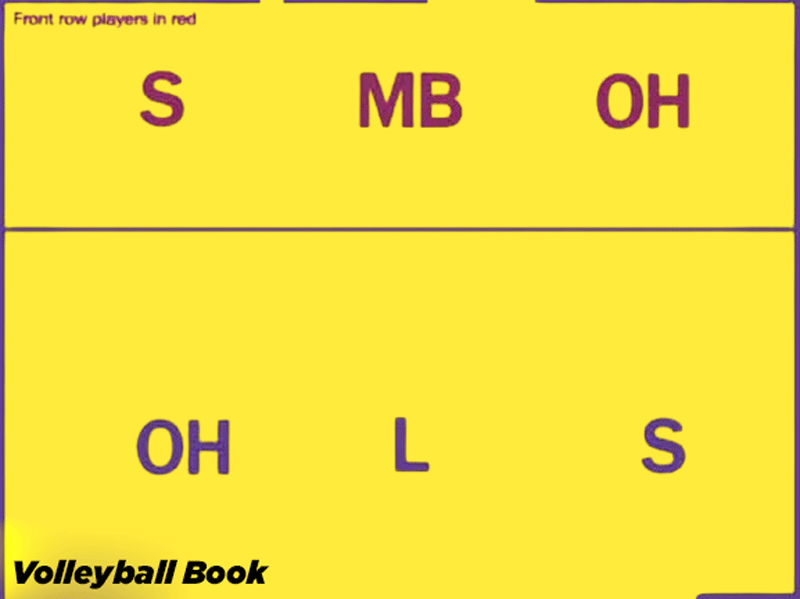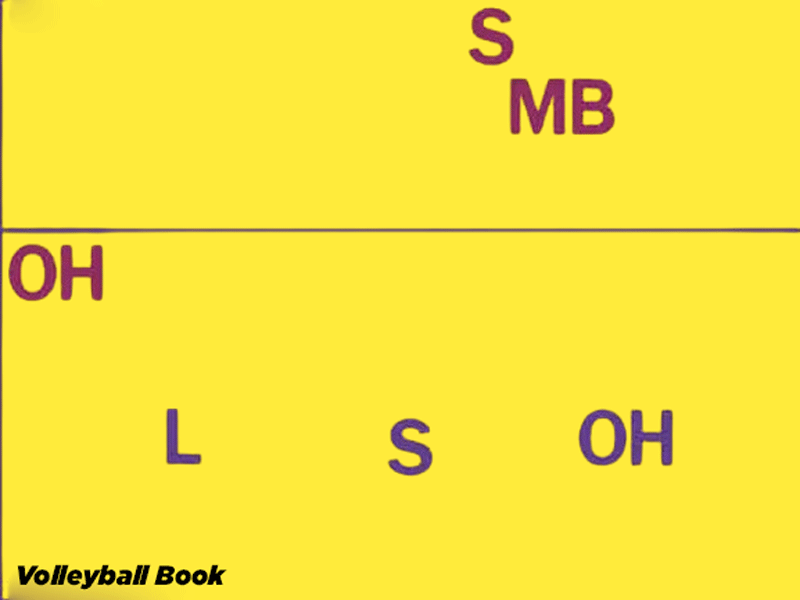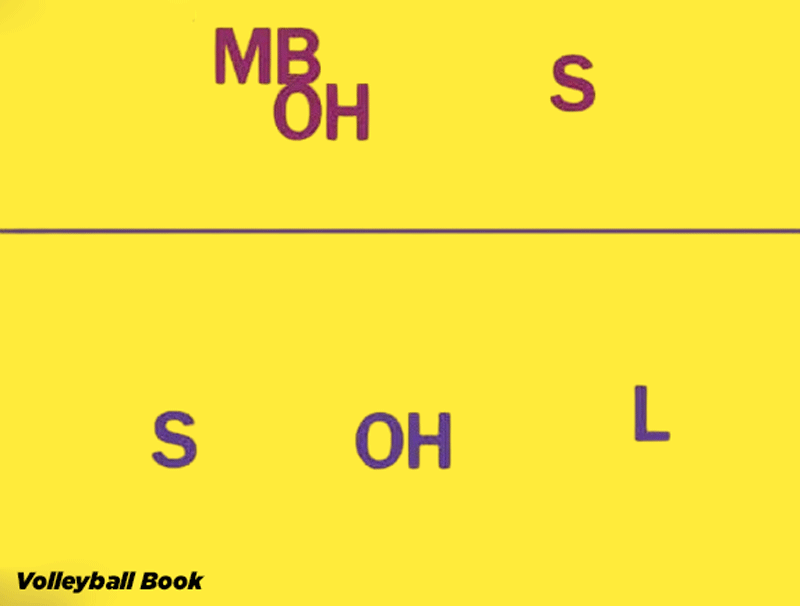How To Run A 4-2 Volleyball Rotation
In today’s article, we will delve into the fundamentals of the 4-2 volleyball rotation—the go-to offensive system for beginner volleyball teams due to its straightforward nature.
This strategy relies on deploying two dedicated setters who exclusively set when positioned in the front court.
The name ‘4-2’ stems from the configuration of having two setters and four other players on the court simultaneously.
Considered one of the more elementary strategies, the 4-2 rotation is typically favored by novice players and teams. Intermediate or advanced teams less commonly employ it.
We’ll also explore the rationale behind opting for this strategy over more complex systems like the 6-2 rotation or 5-1 rotation.
So Let’s Start!
Advantages of Utilizing a 4-2 Rotation
First and foremost, what factors might influence your decision to implement a 4-2 rotation? What are the main advantages of employing this approach over others?
It’s Super Simple
The 4-2 rotation stands out for its straightforwardness when considering court movement and positioning during serve reception.
Rotations become intricate when employing a back row setter, necessitating adjustments to move the setter closer to its base position.
However, in the 4-2 rotation, solely utilizing a front-row setter eliminates this additional complexity.
Hence, the 4-2 system proves optimal for teams new to the sport, facilitating players in grasping rotations without confusion.
Improved Defense
In the 4-2 system, three back-row players are solely dedicated to defensive responsibilities.
In the 5-1/6-2 formations, the setter positioned in the back row often struggles with defensive duties as their priority lies in transitioning to their base position for setting the second ball.
With the back row setter stationed at the net in their base position, their effectiveness in both blocking and digging diminishes, effectively reducing the defensive capability of the team by one player.
Setter Can Be An Offensive Threat
This attribute is often deemed a significant advantage at higher levels, as setters possess the ability to execute a dump shot, creating challenges for opposition blockers.
However, at lower levels, while this feature can still prove beneficial, especially with taller setters, it’s often considered a disadvantage.
This is primarily because younger setters typically lack the height, skill, and athleticism required to consistently win points offensively.
The Setter Is Always Close To the Base
Since the setter consistently occupies the front court, they remain in their base position throughout the rotation.
As a result, there’s no need for the setter to scramble from defense to base position, ensuring they are always well-positioned to set the ball.
Moreover, this setup proves advantageous during serve reception, as all five other players can be utilized for passing the ball if needed.
Disadvantages Of A 4-2 Rotation
While the 4-2 rotation enjoys popularity among lower-level volleyball teams, it’s not without its drawbacks, especially when dealing with more experienced teams.
Only 2 Hitting Options Is Problematic
At the junior level, this poses a significant challenge.
With the setter positioned in the front row, teams are limited to setting either the outside or middle blocker, leading to predictability and making it easier for opposition blockers to position themselves effectively.
This issue is less pronounced at higher levels where teams can employ back-row attackers.
However, less experienced teams lack this option, further exacerbating the predictability of their offensive plays.
In The 4-2 Rotation, Your Setters Have To Block
This isn’t necessarily considered a disadvantage, particularly if your team boasts tall and athletic setters.
However, for teams with shorter setters, effective blocking may pose a challenge, especially when facing much taller outside hitters.
Volleyball 4-2 Rotation Diagrams
The diagrams provided below illustrate the recommended positioning of each player during serve reception.
It’s crucial for teams to familiarize themselves with these rotations to ensure efficient court movement and avoid any rotational violations.
If you’re new to volleyball, it’s advisable to review my comprehensive guide on understanding volleyball rotations beforehand.
In the 4-2 system, there are only three rotations to master, making it incredibly straightforward and easy to learn.
4-2 Rotation Starting Positions
Below, you’ll find the initial rotation of each player on the court.
Front-row players are highlighted in red, while back-row players are depicted in purple.
For this diagram, a libero is positioned in the back row, although another middle blocker could occupy this spot as well.

The specific starting positions for each player are flexible, as long as setters, outsides, and middles/liberos are positioned opposite each other on the court.
We’ll commence with the front row setter positioned in position 4.
Additionally, please note that this article will focus solely on serve-receive rotations. For guidance on base positions in volleyball and understanding movement after the ball crosses the net, refer to my other article on the subject.
Serve Receive Rotation 1 (Setter In 4)
In the first rotation, standing as close as possible to their base positions, the setter and OH will switch around as soon as the ball is served.

Upon the ball being served, the setter will swiftly transition to position 2 to set the ball, while the OH will promptly move to position 4 and transition out to prepare for the offense.
Serve Receive Rotation 2 (Setter In 3)
In this rotation, the only necessary movement is for the setter and MB to switch positions. The outside hitter, who has just entered the front row from the back court, can remain positioned around the 10-foot line to prepare for a spike.

The MB will transition away from the net to prepare for a spike as well.
If required, we also have the option to include our front row OH in the passing lineup.
Serve Receive Rotation 3 (Setter In 2)
In the last rotation, with the setter already in their base position, the OH simply needs to stack to the right of the MB, enabling them to swiftly transition out to the left side of the court in preparation for hitting.

Following this rotation, our first setter will shift into the backcourt, while our backcourt setter will assume the frontcourt position.
At this juncture, we revert to the initial rotation diagram and begin the sequence anew.
4-2 Vs 6-2 Volleyball Rotation
In the 4-2 system, setters perform setting duties exclusively from the front row.
In contrast, in the 6-2 system, setters are designated to set only from the back row.
There are additional distinctions between these systems, and I recommend reviewing my 6-2 rotation write-up for a comprehensive understanding of these differences.
4-2 Vs 5-2 Volleyball Rotation
In a 5-2 rotation, two setters are employed, with one designated to set exclusively from the front row and the other from the back row.
As implied by its name, the 5-2 serves as a balanced compromise between the 4-2 and 6-2 systems.
While relatively rare, the utilization of a 5-2 offense can be justified in specific situations.
How Do You Coach The 4-2 Volleyball Rotation?
The most straightforward method to teach the 4-2 rotation is to guide your players on the court and walk them through each rotation step by step.

During practice, transition your players from serve receive rotations to their defensive base positions, and methodically go through each rotation as if it were a live game scenario.
In just one training session, you could likely cover the entire 4-2 rotation by repetitively walking through it for approximately 20 minutes.
At the beginning of the next training session, review the rotation once more, and your players are likely to grasp it swiftly.
With a clear comprehension of their base positions, players can quickly master the 4-2 rotation.
Also Read: Is Volleyball Hard? 5+ Reasons Challenges That Make Volleyball a Demanding Sport
